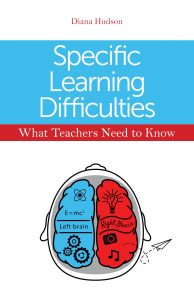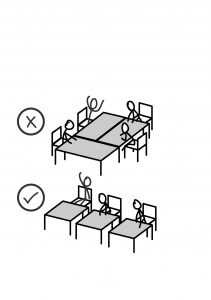 Diana Hudson, author of Specific Learning Difficulties – What Teachers Need to Know, looks at the common challenges that children with ADHD may present in the classroom, and suggests ways that teachers can help them to stay focused and get the most out of their lessons.
Diana Hudson, author of Specific Learning Difficulties – What Teachers Need to Know, looks at the common challenges that children with ADHD may present in the classroom, and suggests ways that teachers can help them to stay focused and get the most out of their lessons.
Sensitive teachers can make a huge difference to the happiness, confidence and academic success of children who have Attention Deficit Hyperactivity Disorder (ADHD).
What problems face children with ADHD?
The three classic behaviour pattern shown by children with ADHD are hyperactivity, impulsiveness and inattention. Typically their concentration span is short and they are liable to act spontaneously and emotionally. They can have good ideas and tremendous enthusiasm but this can be short lived and they will be easily distracted. They may find it difficult to work with others. The teacher’s difficult task is to keep them focused and stimulated while maintaining discipline and not allowing them to dominate or disrupt lessons.
What are the advantages of ADHD?
Children with ADH can be intelligent, imaginative and innovative. They volunteer readily and are prepared to take risks. They may excel in sports, acting, or in particular subjects that motivate them .
They can be both challenging and rewarding to teach.
Tips:
- Know the children
Identify children with ADHD from the special needs register and understand their individual problems. Some may also have additional difficulties such as dyslexia.
Talk to them individually and make your expectations clear along with letting them know that you understand their problems and will be supportive.
- Seating
The ideal place is at the end of the front row with traditional seating as this reduces distraction and allows eye contact with the teacher.
Develop a signal system so that they can let you know if they are feeling agitated or upset without involving the entire class and you can indicate if the child is misbehaving.
- Discipline
Have clear classroom rules
Start a lesson formally the same way each time as this gives security, a clear message that you are in charge and indicates it is time to concentrate
Be consistent and remain calm, firm but approachable
Outline the lesson format and exactly what you expect
Reward and reinforce good behaviour
Give a very clear warning if behaviour is becoming unacceptable and state the consequences.
Any punishments should be seen as fair and be carried out decisively if the child persists
Do not get angry or take outbursts personally
Know what to do if the student needs ‘time out’ from the classroom to de-fuse and outburst. Where can they go to in school where they can calm down and relax? Is there a member of staff that they should report to? Many schools have a procedure so you should not feel unsupported.
- Lesson content
Keep lessons fast paced and interesting with frequent changes of activity
Use multisensory techniques involving visual, auditory and practical elements.
- Movement
Factor in some movement during the activities in a lesson.
Ask the child with ADHD to help give out books, or do other tasks giving them a reason to move.
- Computers
 Teaching programmes can be popular learning tools as they are often fun, colourful, non-judgemental and give instant feedback
Teaching programmes can be popular learning tools as they are often fun, colourful, non-judgemental and give instant feedback
Written work can also be presented more neatly using ICT
- Homework
Try to vary tasks including some involving innovative thinking
Do not set too much
Sometimes mark for content or originality
- Responsibility
If possible harness the enthusiasm of a child with ADHD and give them a role in the class or school. This shows that they are trusted and that you have high expectations.
- Celebrate success
When possible give praise and immediate rewards such as stickers, stars, house points. Acknowledge progress and effort. Remember to report good things to their tutors or parents. These children are often in trouble or underachieving and so they can become disillusioned and depressed. Try to keep them buoyant and motivated.
- Let the child know that you believe in them
Diana Hudson is a tutor and mentor to students with Specific Learning Difficulties (SpLDs), as well as a subject classroom teacher (biology) and learning support teacher and SENCO. She has a diagnosis of dyslexia, and is a parent to four children, three of whom have been diagnosed with an SpLD. Click her to find out more about her book, Specific Learning Difficulties – What Teachers Need to Know.